Muaro Jambi
Muaro Jambi
Muaro Jambi (Indonesian: Candi Muaro Jambi) is a Buddhist temple complex, in Muaro Jambi Regency, Jambi province, Sumatra, Indonesia. It is situated 26 kilometers east from the city of Jambi. The temple complex was built by the Melayu Kingdom, with its surviving temples and other archaeological remains estimated to date from the 7th to 13th century CE. The archaeological site includes eight excavated temple sanctuaries and covers about 12 square kilometers, stretches 7.5 kilometers along the Batang Hari River, 80 menapos or mounds of temple ruins, are not yet restored. It is one of the largest and best-preserved ancient temple complexes in South-East Asia.
It was suggested that Muaro Jambi Temple compound might be the initial location of Srivijaya kingdom. This is mainly because, Muaro Jambi has far richer temple concentration—in contrast to the scarcity of archaeological sites in South Sumatra.
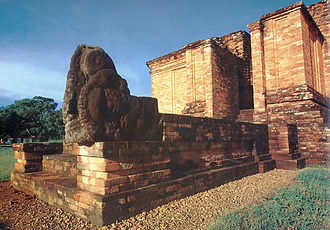 History
The start of the rise of the kingdom of Melayu can be dated to 1025 when Indian kingdom of Chola attacked and destroyed the capital of the Sumatran maritime empire of Srivijaya. This allowed a number of smaller Sumatran polities to expand their political and economic influence.
During the twelfth and thirteenth centuries it seems that from its river estuarine basis along the Batang Hari, Melayu became the dominant economic power in Sumatra.
Muaro Jambi is estimated to have been built somewhere around 7th to 12th century CE, and the substantial archaeological remains suggest that this temple compound may have been the site of the Melayu capital. The city’s age of glory came to an end in 1278 when Java’s Singhasari kingdom attacked the city, even succeeding in capturing members of the royal family. The site was rediscovered by British soldier, S.C. Crooke in 1824. It is now protected as a national monument.
History
The start of the rise of the kingdom of Melayu can be dated to 1025 when Indian kingdom of Chola attacked and destroyed the capital of the Sumatran maritime empire of Srivijaya. This allowed a number of smaller Sumatran polities to expand their political and economic influence.
During the twelfth and thirteenth centuries it seems that from its river estuarine basis along the Batang Hari, Melayu became the dominant economic power in Sumatra.
Muaro Jambi is estimated to have been built somewhere around 7th to 12th century CE, and the substantial archaeological remains suggest that this temple compound may have been the site of the Melayu capital. The city’s age of glory came to an end in 1278 when Java’s Singhasari kingdom attacked the city, even succeeding in capturing members of the royal family. The site was rediscovered by British soldier, S.C. Crooke in 1824. It is now protected as a national monument.
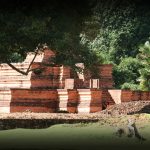

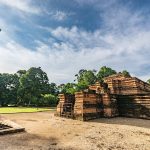
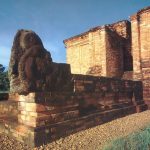
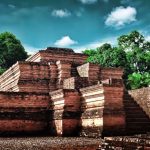
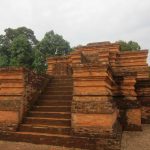
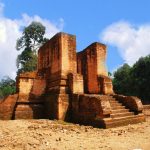
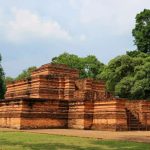

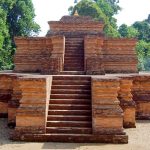
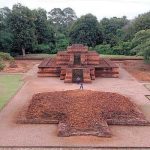
Design and structures
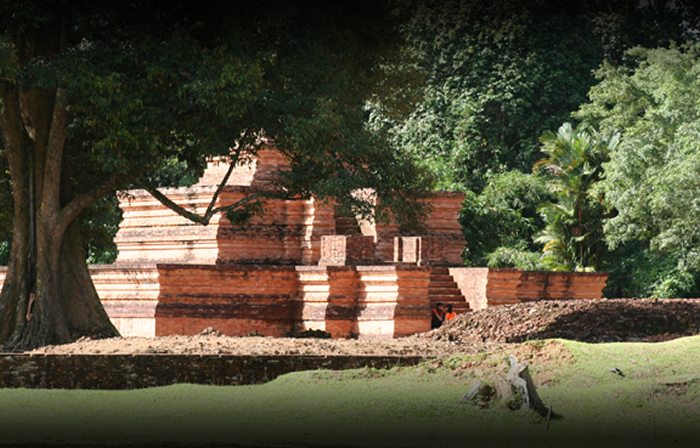 The temple complex of Candi Muaro Jambi is spread out over a large area along the banks of the Batang Hari River. Eight temple complexes have been excavated but many more mounds and sites remain to be explored within the conservation area, much of which is still covered by thick jungle.
The three most significant intact temples are known as Candi Tinggi, Candi Kedaton, and Candi Gumpung. The temples are built from red brick and unlike the temples of Java, feature very little ornamentation, carving, or statuary. A few pieces of sculpture are housed in a small, on-site museum.
The wooden dwellings that are believed to have housed the city’s population have all disappeared without a trace. Only 9 temples have been restored, 3 have mentioned above and the others are Candi Tinggi I, Candi Kembarbatu, Candi Gedong I, and Candi Gedong II.
The temple complex of Candi Muaro Jambi is spread out over a large area along the banks of the Batang Hari River. Eight temple complexes have been excavated but many more mounds and sites remain to be explored within the conservation area, much of which is still covered by thick jungle.
The three most significant intact temples are known as Candi Tinggi, Candi Kedaton, and Candi Gumpung. The temples are built from red brick and unlike the temples of Java, feature very little ornamentation, carving, or statuary. A few pieces of sculpture are housed in a small, on-site museum.
The wooden dwellings that are believed to have housed the city’s population have all disappeared without a trace. Only 9 temples have been restored, 3 have mentioned above and the others are Candi Tinggi I, Candi Kembarbatu, Candi Gedong I, and Candi Gedong II.
 The temple complex of Candi Muaro Jambi is spread out over a large area along the banks of the Batang Hari River. Eight temple complexes have been excavated but many more mounds and sites remain to be explored within the conservation area, much of which is still covered by thick jungle.
The three most significant intact temples are known as Candi Tinggi, Candi Kedaton, and Candi Gumpung. The temples are built from red brick and unlike the temples of Java, feature very little ornamentation, carving, or statuary. A few pieces of sculpture are housed in a small, on-site museum.
The wooden dwellings that are believed to have housed the city’s population have all disappeared without a trace. Only 9 temples have been restored, 3 have mentioned above and the others are Candi Tinggi I, Candi Kembarbatu, Candi Gedong I, and Candi Gedong II.
The temple complex of Candi Muaro Jambi is spread out over a large area along the banks of the Batang Hari River. Eight temple complexes have been excavated but many more mounds and sites remain to be explored within the conservation area, much of which is still covered by thick jungle.
The three most significant intact temples are known as Candi Tinggi, Candi Kedaton, and Candi Gumpung. The temples are built from red brick and unlike the temples of Java, feature very little ornamentation, carving, or statuary. A few pieces of sculpture are housed in a small, on-site museum.
The wooden dwellings that are believed to have housed the city’s population have all disappeared without a trace. Only 9 temples have been restored, 3 have mentioned above and the others are Candi Tinggi I, Candi Kembarbatu, Candi Gedong I, and Candi Gedong II.
(ha.) Area
0
Total Temples
0
Restored Temples
0
In total, there are at least 110 temple buildings, most of which are stone mounds. There are only 9 buildings that have been perfectly restored and are now the most visited sites. The nine buildings are Koto Mahligai Temple, Kedaton, Gedong I, Gedong II, Gumpung, Tinggi, Telago Rajo, Kembar Batu and Astano Temple.
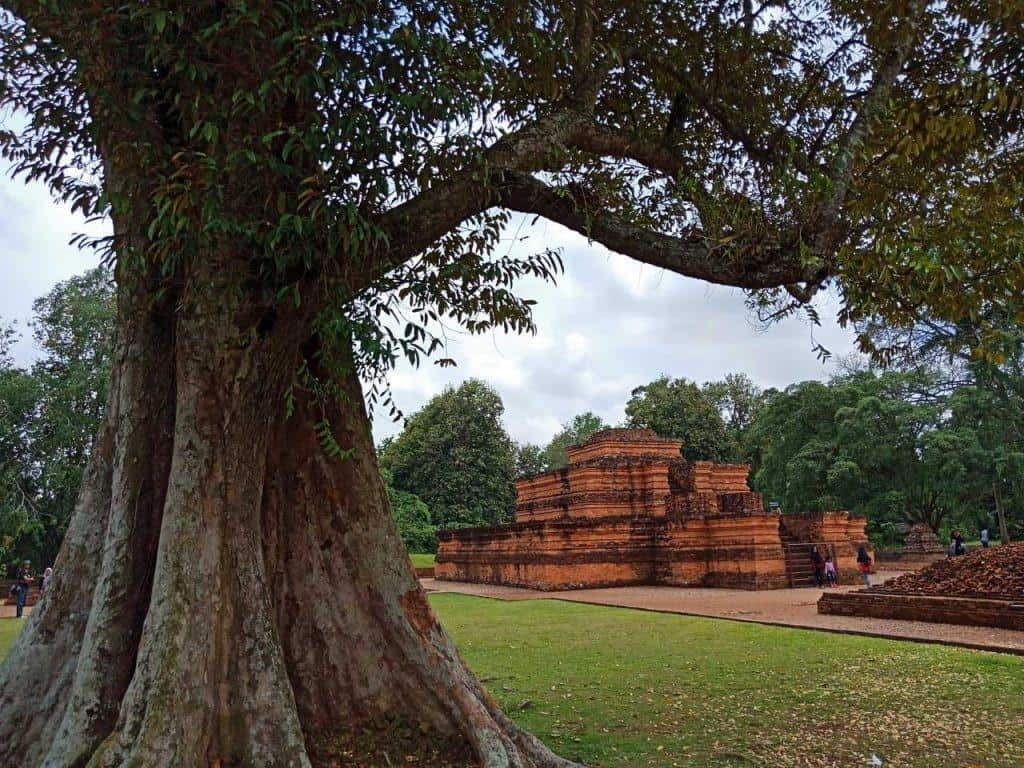 Candi Tinggi
Candi Tinggi is a unique and famous temple which has become the icon of the Muaro Jambi Temple Complex. Located to the northeast of Gumpung Temple, you will find this temple when you first enter the complex area. The Candi Tinggi building has an area of 2.92 hectares, consisting of the main building with a square layout of 16.2 m2 and 7.6 meters high.
When it was first discovered, Candi Tinggi contained a lot of gold and precious stones. There are also Persian glass, iron nails, bronze metal and fragments of stone statues. Fragments of Chinese ceramics from the T’ang, Song, Yuan, Ming and Qing dynasties were also found outside the temple.
Candi Tinggi
Candi Tinggi is a unique and famous temple which has become the icon of the Muaro Jambi Temple Complex. Located to the northeast of Gumpung Temple, you will find this temple when you first enter the complex area. The Candi Tinggi building has an area of 2.92 hectares, consisting of the main building with a square layout of 16.2 m2 and 7.6 meters high.
When it was first discovered, Candi Tinggi contained a lot of gold and precious stones. There are also Persian glass, iron nails, bronze metal and fragments of stone statues. Fragments of Chinese ceramics from the T’ang, Song, Yuan, Ming and Qing dynasties were also found outside the temple.
 Candi Gumpung
Gumpung Temple, the second largest temple after Kedaton Temple. Gumpung Temple is located about 200 meters to the southwest from the High Temple. Gumpung Temple consists of several rooms, each of which is fenced with bricks with an entrance. Unfortunately, now only the lower part of the fence and the entrance remain.
From the data that has been collected, the inscription states that this temple is a Buddhist temple. This temple was built in the mid-9th to 10th centuries AD. Gumpung Temple is the outermost part and closest to the entrance to the temple complex. This temple is also surrounded by a very wide field.
Candi Gumpung
Gumpung Temple, the second largest temple after Kedaton Temple. Gumpung Temple is located about 200 meters to the southwest from the High Temple. Gumpung Temple consists of several rooms, each of which is fenced with bricks with an entrance. Unfortunately, now only the lower part of the fence and the entrance remain.
From the data that has been collected, the inscription states that this temple is a Buddhist temple. This temple was built in the mid-9th to 10th centuries AD. Gumpung Temple is the outermost part and closest to the entrance to the temple complex. This temple is also surrounded by a very wide field.
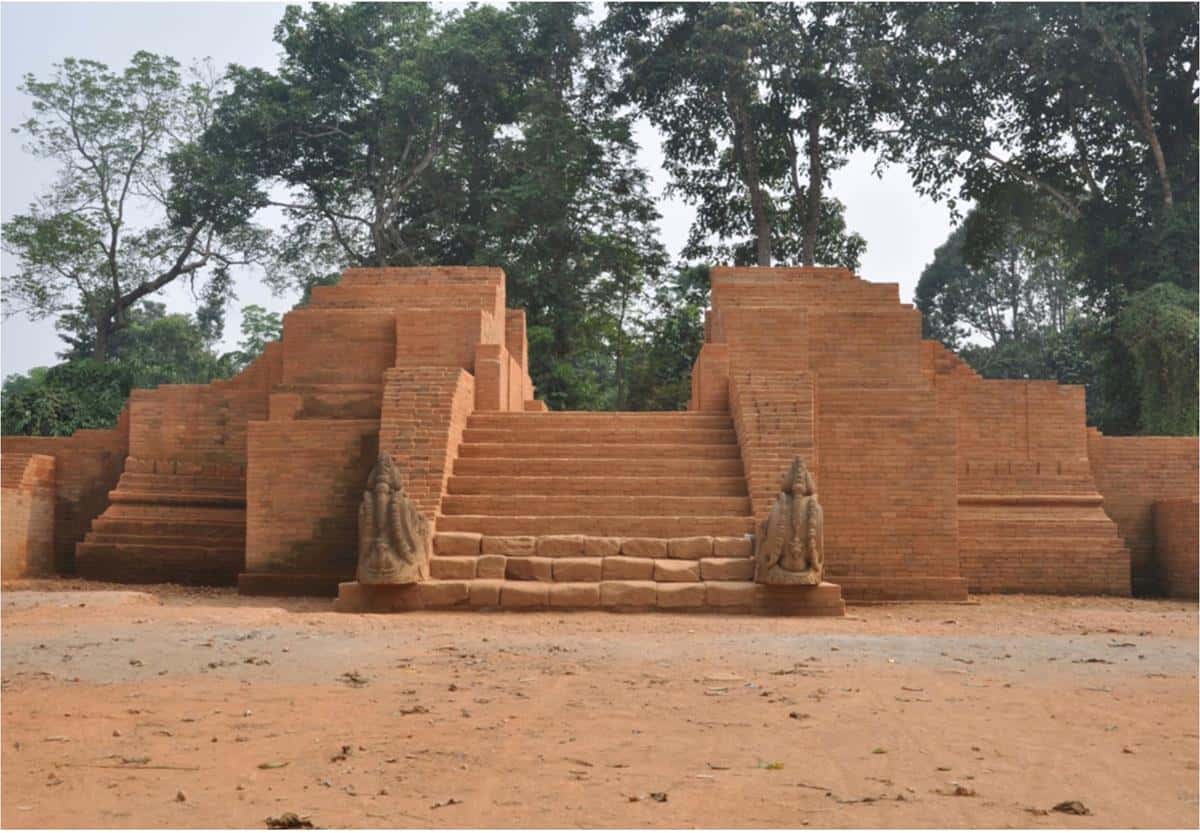 Candi Kedaton
Kedaton Temple is the largest temple building of all the temples in the Muaro Jambi Temple complex. The Kedaton Temple itself was discovered in 1976 and restored again in 2010 to 2011. In the Kedaton Temple found Makara, Padmasana (the seat of the statue), Elephant statue and Bronze pot.
The Kedaton itself, if interpreted as deep as Indonesian, means “Embassy or Kingdom”. The use of the name Kedaton is known from the Telaga Batu inscription which is a relic of the Sriwijaya Kingdom. The location of Kedaton Temple is about 1500 meters to the southwest from Gedong II Temple.
Candi Kedaton
Kedaton Temple is the largest temple building of all the temples in the Muaro Jambi Temple complex. The Kedaton Temple itself was discovered in 1976 and restored again in 2010 to 2011. In the Kedaton Temple found Makara, Padmasana (the seat of the statue), Elephant statue and Bronze pot.
The Kedaton itself, if interpreted as deep as Indonesian, means “Embassy or Kingdom”. The use of the name Kedaton is known from the Telaga Batu inscription which is a relic of the Sriwijaya Kingdom. The location of Kedaton Temple is about 1500 meters to the southwest from Gedong II Temple.
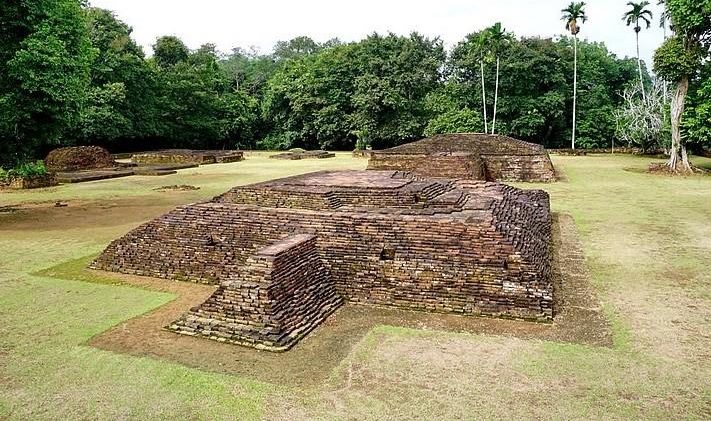 Candi Kembar Batu
Candi Kembar Batu, Twin Batu Temple is located about 250 meters to the southeast of the Tinggi temple location. Unfortunately the shape of the Twin Stones temple is not as beautiful as the other temples. Because all we can see now is just the legs. But in this site there are two twin buildings that we can see and other buildings.
Candi Telago Rajo
Telago Rajo Temple was discovered in the mid-1970s, located about 100 meters from Gumpung Temple. In Telago Rajo there are also several other ancient ponds near the temple building.
Telago Rajo is thought to function as a reservoir to control water. So that in the past, water would not inundate the temple buildings around it.
Candi Kembar Batu
Candi Kembar Batu, Twin Batu Temple is located about 250 meters to the southeast of the Tinggi temple location. Unfortunately the shape of the Twin Stones temple is not as beautiful as the other temples. Because all we can see now is just the legs. But in this site there are two twin buildings that we can see and other buildings.
Candi Telago Rajo
Telago Rajo Temple was discovered in the mid-1970s, located about 100 meters from Gumpung Temple. In Telago Rajo there are also several other ancient ponds near the temple building.
Telago Rajo is thought to function as a reservoir to control water. So that in the past, water would not inundate the temple buildings around it.
 Candi Tinggi
Candi Tinggi is a unique and famous temple which has become the icon of the Muaro Jambi Temple Complex. Located to the northeast of Gumpung Temple, you will find this temple when you first enter the complex area. The Candi Tinggi building has an area of 2.92 hectares, consisting of the main building with a square layout of 16.2 m2 and 7.6 meters high.
When it was first discovered, Candi Tinggi contained a lot of gold and precious stones. There are also Persian glass, iron nails, bronze metal and fragments of stone statues. Fragments of Chinese ceramics from the T’ang, Song, Yuan, Ming and Qing dynasties were also found outside the temple.
Candi Tinggi
Candi Tinggi is a unique and famous temple which has become the icon of the Muaro Jambi Temple Complex. Located to the northeast of Gumpung Temple, you will find this temple when you first enter the complex area. The Candi Tinggi building has an area of 2.92 hectares, consisting of the main building with a square layout of 16.2 m2 and 7.6 meters high.
When it was first discovered, Candi Tinggi contained a lot of gold and precious stones. There are also Persian glass, iron nails, bronze metal and fragments of stone statues. Fragments of Chinese ceramics from the T’ang, Song, Yuan, Ming and Qing dynasties were also found outside the temple.
 Candi Gumpung
Gumpung Temple, the second largest temple after Kedaton Temple. Gumpung Temple is located about 200 meters to the southwest from the High Temple. Gumpung Temple consists of several rooms, each of which is fenced with bricks with an entrance. Unfortunately, now only the lower part of the fence and the entrance remain.
From the data that has been collected, the inscription states that this temple is a Buddhist temple. This temple was built in the mid-9th to 10th centuries AD. Gumpung Temple is the outermost part and closest to the entrance to the temple complex. This temple is also surrounded by a very wide field.
Candi Gumpung
Gumpung Temple, the second largest temple after Kedaton Temple. Gumpung Temple is located about 200 meters to the southwest from the High Temple. Gumpung Temple consists of several rooms, each of which is fenced with bricks with an entrance. Unfortunately, now only the lower part of the fence and the entrance remain.
From the data that has been collected, the inscription states that this temple is a Buddhist temple. This temple was built in the mid-9th to 10th centuries AD. Gumpung Temple is the outermost part and closest to the entrance to the temple complex. This temple is also surrounded by a very wide field.
 Candi Kedaton
Kedaton Temple is the largest temple building of all the temples in the Muaro Jambi Temple complex. The Kedaton Temple itself was discovered in 1976 and restored again in 2010 to 2011. In the Kedaton Temple found Makara, Padmasana (the seat of the statue), Elephant statue and Bronze pot.
The Kedaton itself, if interpreted as deep as Indonesian, means “Embassy or Kingdom”. The use of the name Kedaton is known from the Telaga Batu inscription which is a relic of the Sriwijaya Kingdom. The location of Kedaton Temple is about 1500 meters to the southwest from Gedong II Temple.
Candi Kedaton
Kedaton Temple is the largest temple building of all the temples in the Muaro Jambi Temple complex. The Kedaton Temple itself was discovered in 1976 and restored again in 2010 to 2011. In the Kedaton Temple found Makara, Padmasana (the seat of the statue), Elephant statue and Bronze pot.
The Kedaton itself, if interpreted as deep as Indonesian, means “Embassy or Kingdom”. The use of the name Kedaton is known from the Telaga Batu inscription which is a relic of the Sriwijaya Kingdom. The location of Kedaton Temple is about 1500 meters to the southwest from Gedong II Temple.
 Candi Kembar Batu
Candi Kembar Batu, Twin Batu Temple is located about 250 meters to the southeast of the Tinggi temple location. Unfortunately the shape of the Twin Stones temple is not as beautiful as the other temples. Because all we can see now is just the legs. But in this site there are two twin buildings that we can see and other buildings.
Candi Telago Rajo
Telago Rajo Temple was discovered in the mid-1970s, located about 100 meters from Gumpung Temple. In Telago Rajo there are also several other ancient ponds near the temple building.
Telago Rajo is thought to function as a reservoir to control water. So that in the past, water would not inundate the temple buildings around it.
Candi Kembar Batu
Candi Kembar Batu, Twin Batu Temple is located about 250 meters to the southeast of the Tinggi temple location. Unfortunately the shape of the Twin Stones temple is not as beautiful as the other temples. Because all we can see now is just the legs. But in this site there are two twin buildings that we can see and other buildings.
Candi Telago Rajo
Telago Rajo Temple was discovered in the mid-1970s, located about 100 meters from Gumpung Temple. In Telago Rajo there are also several other ancient ponds near the temple building.
Telago Rajo is thought to function as a reservoir to control water. So that in the past, water would not inundate the temple buildings around it.











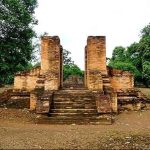
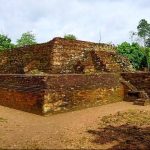
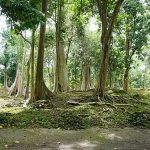
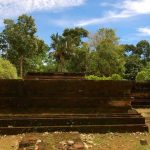
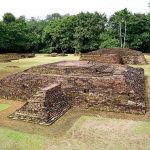
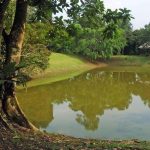
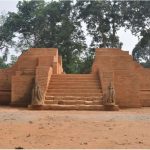
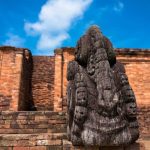
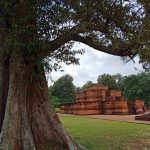
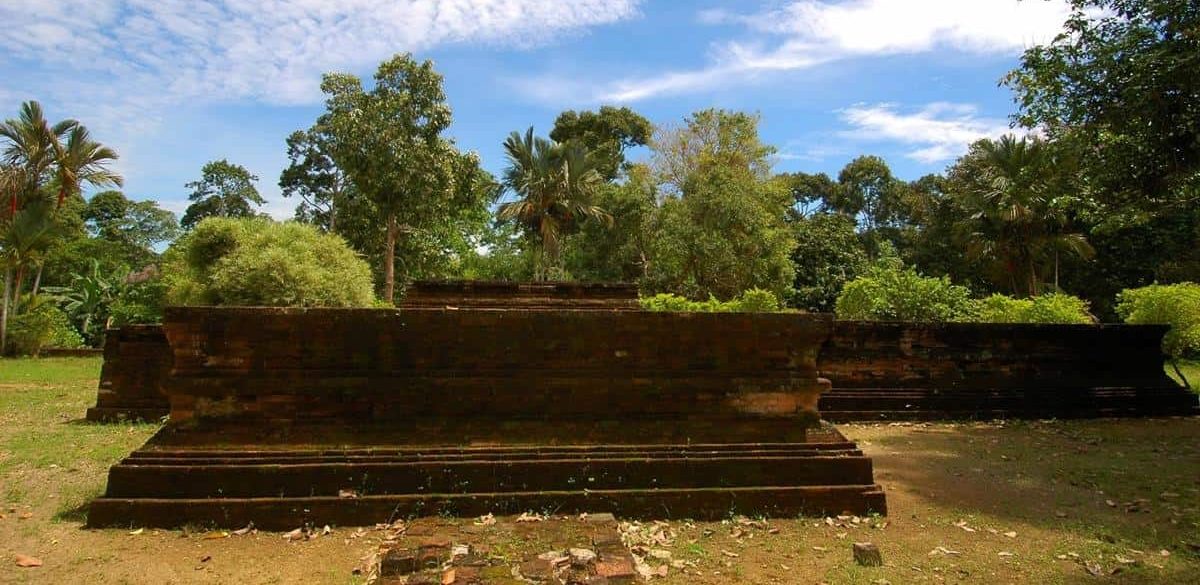 Candi Astano
Astano Temple or if translated Astano means “eat the King”. Astano Temple is located about 350 meters to the north from the banks of the Batanghari River and there is a tomb inside.
According to local legend, the tombs in Astano Temple are the tombs of kings. This place is very guarded by the community, the community even opposes the demolition of the graves on the site.
Candi Astano
Astano Temple or if translated Astano means “eat the King”. Astano Temple is located about 350 meters to the north from the banks of the Batanghari River and there is a tomb inside.
According to local legend, the tombs in Astano Temple are the tombs of kings. This place is very guarded by the community, the community even opposes the demolition of the graves on the site.
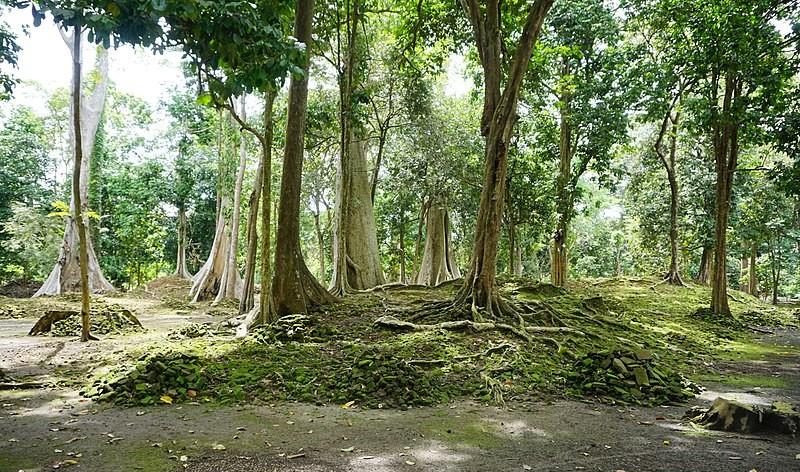 Candi Koto Mahligai
Koto Mahligai Temple is the farthest temple from the temple complex which is close to Lake Lamo Jambi. Koto mahligai temple might be called an invisible temple. Because this temple is covered by Sialang trees and the buildings are not yet shaped or are still piles of stones. Even so, the atmosphere is relaxed at Koto Mahligai Temple, with a refreshing and soothing breeze.
To get to Koto Mahligai Temple, you will walk on a path that divides the rubber trees of the residents. During the trip, we will also be presented with views of other temples, some of which are still in the form of piles of stones.
Candi Koto Mahligai
Koto Mahligai Temple is the farthest temple from the temple complex which is close to Lake Lamo Jambi. Koto mahligai temple might be called an invisible temple. Because this temple is covered by Sialang trees and the buildings are not yet shaped or are still piles of stones. Even so, the atmosphere is relaxed at Koto Mahligai Temple, with a refreshing and soothing breeze.
To get to Koto Mahligai Temple, you will walk on a path that divides the rubber trees of the residents. During the trip, we will also be presented with views of other temples, some of which are still in the form of piles of stones.
 Candi Gedong I
Gedong I Temple has a land area of 5,525 m2, in which there is the main building, perwara, fence and gate on the east side. This temple is 2 kilometers from the center of the Muaro Jambi Temple complex.
The Gedong I Temple building consists of 2 levels, because on the east side there are stairs going up. But you have to be careful if you want to go up, because the stones in the temple are red stones.
Candi Gedong I
Gedong I Temple has a land area of 5,525 m2, in which there is the main building, perwara, fence and gate on the east side. This temple is 2 kilometers from the center of the Muaro Jambi Temple complex.
The Gedong I Temple building consists of 2 levels, because on the east side there are stairs going up. But you have to be careful if you want to go up, because the stones in the temple are red stones.
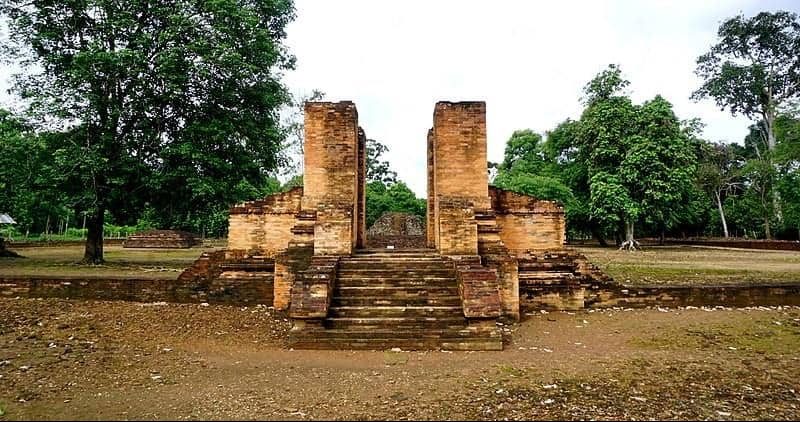 Candi Gedong II
Gedong II Temple is located not far from Gedong II Temple, which is on the west side of the Gedong I Temple Complex. Gedong II Temple is surrounded by a brick fence with a gate on the east side. Within the Gedong II temple building there is a main temple and two ancillary temples. This temple has a structure made of stone and wood.
In Gedong II Temple, an elephant statue was also found on which a lion with the name Gadjahsingha rode on its back. Unfortunately, this area has now been moved to the Muara Jambi Bathing Site Collection Building.
Here you can go around by renting a bicycle to get to each of the existing temple sites. Don’t forget if you intend to take a vacation or work service to Jambi City to take a trip to these temples. Another important thing, don’t forget to buy souvenirs typical of Jambi City to take home.
Candi Gedong II
Gedong II Temple is located not far from Gedong II Temple, which is on the west side of the Gedong I Temple Complex. Gedong II Temple is surrounded by a brick fence with a gate on the east side. Within the Gedong II temple building there is a main temple and two ancillary temples. This temple has a structure made of stone and wood.
In Gedong II Temple, an elephant statue was also found on which a lion with the name Gadjahsingha rode on its back. Unfortunately, this area has now been moved to the Muara Jambi Bathing Site Collection Building.
Here you can go around by renting a bicycle to get to each of the existing temple sites. Don’t forget if you intend to take a vacation or work service to Jambi City to take a trip to these temples. Another important thing, don’t forget to buy souvenirs typical of Jambi City to take home.
